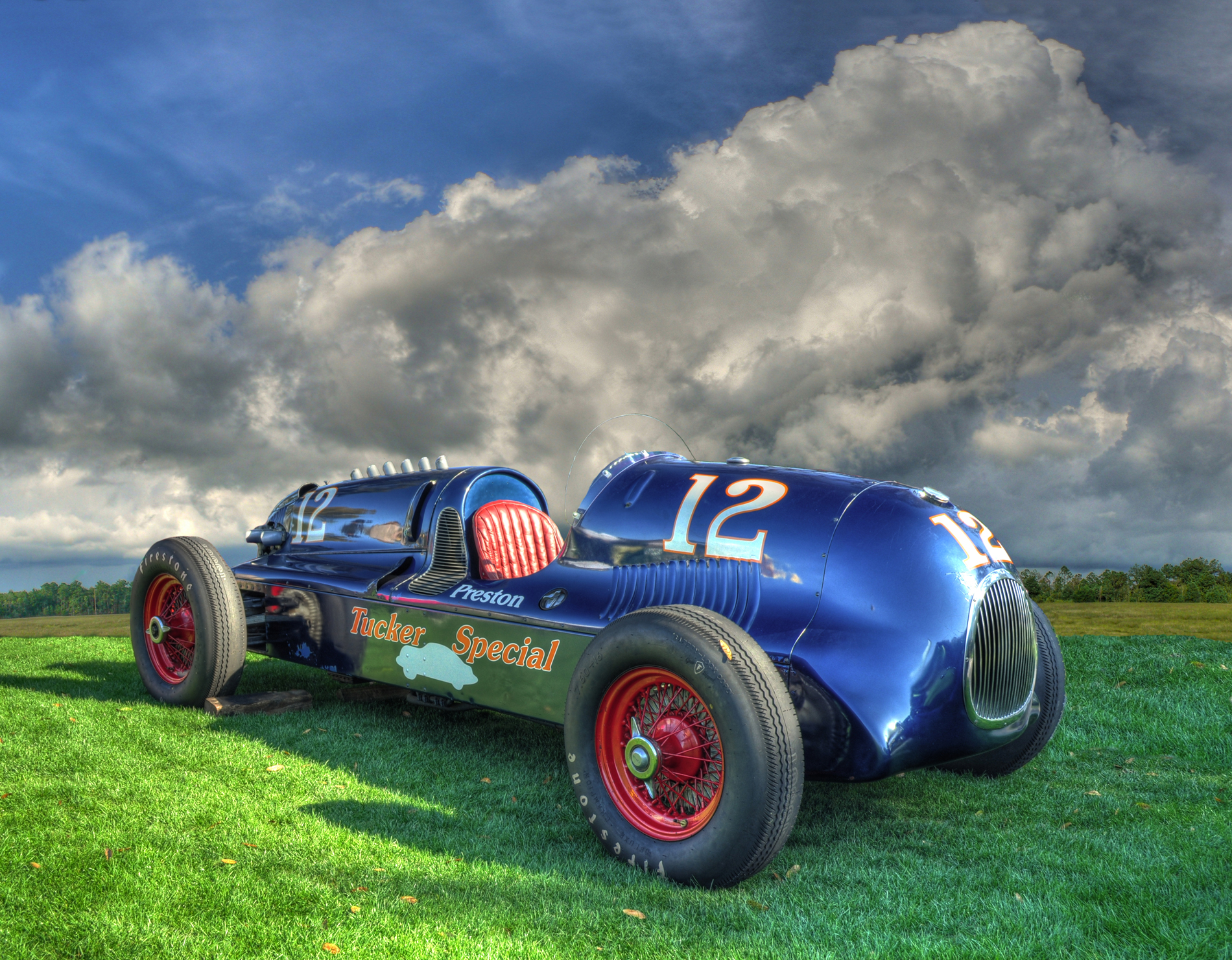
The 1938 Gulf Miller Special is a notable example of American racing engineering from the pre-war era. Developed by Harry Miller, a legendary figure in automotive design and racing, the Gulf Miller Special was built to compete in the Indianapolis 500 and other prominent racing events.
Following the first-ever appearance by a rear-engine car at Indianapolis during practice in 1937, the legendary Harry Miller was commissioned by the Gulf Oil Company to build three such cars. Extremely futuristic for the time they featured four-wheel drive and a six cylinder supercharged Miller engine, titled over at an angle. Only one arrived in 1938, too late to qualify. Of three in 1939, only George Bailey was able to qualify, although he did so in sixth place, the first rear-engine car ever in the Indy 500 race-day lineup. Of the handful of starts by these cars between 1939 and 1947, none traveled further than Bailey’s 47 laps in 1939. Originally intended to run on pump gasoline, they featured side mounted pontoon tanks, which proved to be very dangerous. After a pair of serious fires, the cars appeared in 1941 minus the pontoon tanks.
Overview
- Production Year: 1938
- Developer: Harry Miller
- Model: Gulf Miller Special
- Purpose: Racing (Indianapolis 500 and other events)
Design and Specifications
- Engine:
- The Gulf Miller Special is powered by a supercharged inline-8 engine.
- The engine displacement is approximately 3.0 liters (183 cubic inches).
- It produces around 275-300 horsepower, a significant amount for the era.
- Transmission:
- The car features a 3-speed manual transmission.
- The gearbox is designed to handle the high power output and provide smooth shifting during races.
- Chassis:
- The chassis is a lightweight yet sturdy design, using tubular construction to reduce weight while maintaining structural integrity.
- The wheelbase is optimized for racing, providing stability and agility on the track.
- Suspension:
- The front suspension consists of independent wishbones with a transverse leaf spring.
- The rear suspension features a solid axle with semi-elliptic leaf springs.
- This setup offers a balance between handling and ride comfort, crucial for endurance racing.
- Brakes:
- The Gulf Miller Special is equipped with hydraulic drum brakes on all four wheels.
- These brakes provide reliable stopping power, essential for the high speeds and demanding conditions of racing.
Performance
- Top Speed: The Gulf Miller Special could achieve top speeds of around 140 mph (225 km/h).
- Acceleration: The supercharged engine offers rapid acceleration, making the car highly competitive in its class.
- Handling: The car's advanced suspension and lightweight chassis provide excellent handling, allowing drivers to navigate tight corners and maintain high speeds on straightaways.
Design Features
- Bodywork:
- The body of the Gulf Miller Special is designed with aerodynamics in mind, featuring a streamlined shape to reduce drag.
- The car has a low, sleek profile, with a pointed nose and tapered tail to enhance its aerodynamic efficiency.
- Lightweight materials, such as aluminum, are used for the body panels to reduce overall weight.
- Interior:
- The interior is minimalistic, focused on functionality and driver comfort during races.
- The driver's seat is designed to provide support and comfort, crucial for endurance events.
- The dashboard includes essential gauges and controls, arranged for easy access and readability during high-speed driving.
- Styling:
- The Gulf Miller Special's styling is characterized by its elegant and purposeful design, reflecting the engineering excellence of Harry Miller.
- The car often features bold graphics and the iconic Gulf livery, adding to its visual appeal and branding.
Legacy and Historical Significance
- Historical Significance:
- The 1938 Gulf Miller Special represents a pivotal moment in racing history, showcasing the advanced engineering and innovative design of its time.
- It reflects the collaboration between Harry Miller and Gulf Oil, highlighting the importance of sponsorship in motorsport.
- Racing Success:
- The car competed in the Indianapolis 500 and other major racing events, demonstrating its performance capabilities and engineering excellence.
- Although specific race results varied, the Gulf Miller Special is remembered for its competitive spirit and technological advancements.
Taken at the 2011 Amelia Island Concours d'Elegance.
You may purchase a print of the 1938 Gulf Miller Special in our dElegance 2011 online gallery.

